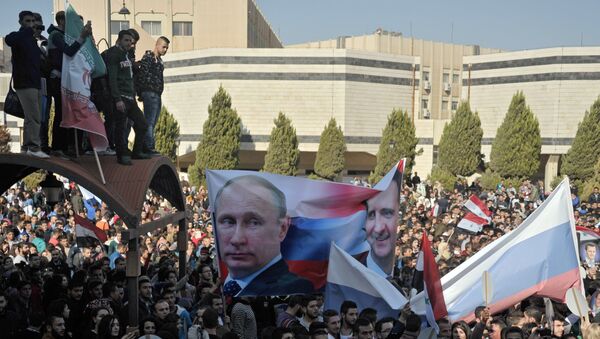Radio Sputnik spoke with Tim Anderson, an expert in international politics from the University of Sydney, who said that Moscow's campaign in Syria helped the country to maintain its statehood and integrity.
“There was a shift in the strategy when Russia got involved. It wasn’t just about the air power but also about diplomacy and the coordination of different forces of that time. Russia helped coordinate and strengthen the relationship with Iran and Iraq too,” Anderson told Sputnik.
Talking about Russia’s major achievements in Syria, Anderson said, “I think it was putting the proxy armies of NATO and the Gulf states on the back foot. It was really turning the war around and as we saw the results from early 2015 to this year, there are a very large number of displaced people returning to their homes. Several hundred villages and towns across Northern Syria have been liberated.”
Looking at the current situation in Syria and assuming what would have happened had Russia turned down Assad’s request for aerial support to fight the militants, what would have happened then, Anderson said, “Around this time last year I was in Syria, the Syrians held their ground but there was this huge invasion of an al-Qaeda linked group from Turkey into Idlib and Palmyra.”
He further said that although those invasions were turned around, the Syrian Army was starting on many fronts and the role of Iran on the ground was very important to ending the conflict.
“The role of Iran in the coordination of ground forces and recruiting the militia from around the region was vital. What was even more important was the coordination of Iran with Russia. I stress once again that the coordination role of different partners which you might call the Syrian alliance in Syria was very important,” the analyst said.
Looking back at the past year in Syria, it can be seen that the missions were conducted in close cooperation with the Syrian troops, using intelligence data collected from a coordination center in Baghdad.
However, some of the air units remained in the country to provide aerial support for ground operations launched by the Syrian Army.
The analyst further spoke about how now it is known through a lot of independent evidence that the US was actually directly or indirectly backing proxy groups.
“President Putin used the same rationale when he got involved in Syria and that was to try and avoid direct confrontation with the US, to try and use the same language, knowing that the US would tie itself up in knots there,” Anderson said.
He further said that it was impossible for the US to completely cut itself off from the great force of the jihadists in Syria.
“This involvement got really tested in the last few weeks because the crux of the last ceasefire agreement, which was worked out and the Russian government put it on the line, now was really about the US trying to get its act together. It was to delineate who these moderate rebels were and when the US will disassociate itself from the al-Qaeda groups,” Anderson said.
He further spoke about the current crisis between the US and Russia’s diplomatic ties and whether it will get back on track or not.
All in all, in the past twelve months the Russian Aerospace Forces destroyed thousands of terrorist positions in Syria, including command and control centers, arms depots, oil refineries and other installations.
The aerial campaign also made it possible to free key areas in Latakia, Idlib and Aleppo province, including Syria’s famous ancient city of Palmyra.




